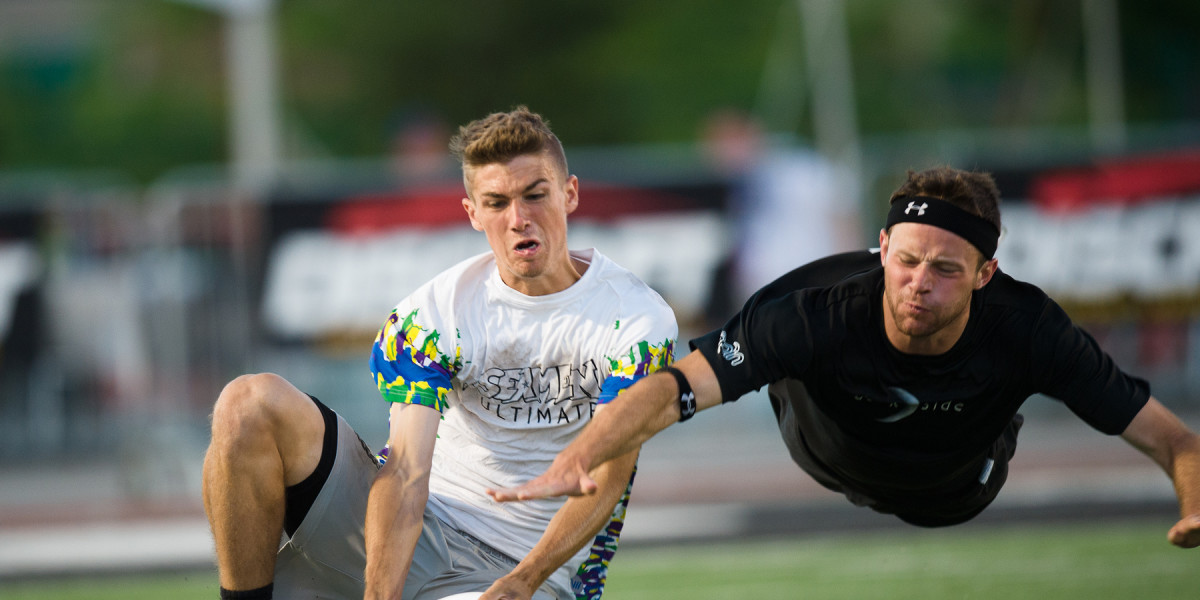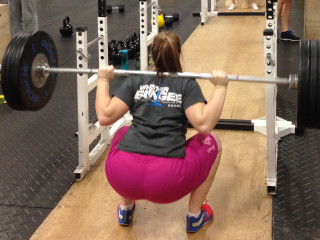 2014 USAU College Championships. Photo by Kevin Leclaire of Ultiphotos.
2014 USAU College Championships. Photo by Kevin Leclaire of Ultiphotos.
I concluded the stability series last month, arguing for the incorporation of pre-hab exercises and encouraging athletes to start their offseason by focusing on stability. I then nonchalantly made the squat the cornerstone of all off-season training and flippantly noted that some of you may take months to master the movement. That was a jerk move. Squatting is hard and not everyone has access to experienced strength & conditioning coaches to guide them on their squat journey. As an apology, I am going to share with you my patent pending (not really) approach to correcting squats.
Static Stretching
Sure, the literature on static stretching is mixed, with some arguing the positives, others arguing the negatives, and some experts choosing to position themselves in an ambiguously confusing grey area. In my experience, unless you spent years practicing gymnastics while simultaneously doing ballet intermingled with stretches as a hockey goalie – pun intended – you will likely need to get a little more limber. Here are three go to stretches for squat repair:
Pigeon
Couch Stretch
Lat Opener
Dynamic Stretching
Dynamic stretches are great. And unlike static stretches, most agree that they are the bee’s knees. While it is possible to reduce your reliance on static holds over time, I believe that dynamic stretching – similar to what you perform before playing – is always beneficial. I find it is best if you get in the routine of performing some sort of dynamic complex first thing in the morning, before physical activity, and before bed. If you sit at a desk all day, it is a good idea to get up every so often and move through space. If you can handle the ridicule, I recommend doing some dynamic stretches.
Spider-Man Lunge With Hamstring
Spider-Man Lunge With Reach
Dive Bomber Push Up
Activation Exercises
Outside of mobility, the easiest way to make sure your squat is in tip top shape is activation. Athletes often correlate inconsistencies in their squat with mobility limitations; however, many movement faults are the result of poor patterning. Athletes simply do not know how to move through space properly. I have found that a few simple drills and exercises before squatting often improve mechanics considerably. Here are some favourites for your glutes and trunk from the stability series. Include these in your warm ups before squatting.
Deadbug
Glute Bridge
Lateral Monster Walk
Wall Squat
Known as “squat therapy” in some circles, the wall squat is the best way to learn how to squat. The wall squat teaches athletes to keep their chest up during the squat. It is also corrects balance issues and works in relation to the activation exercises I laid out earlier. Begin standing about a foot away from a wall and reach your hands up above your head. This will help keep your chest up. Next, make sure your trunk is tight – think deadbug. Finally, slowly pull yourself down using the same muscles you felt activate during the monster walks and glute bridges. Don’t let yourself cheat any aspect of the movement by speeding up through sticking points.
If you successfully squat down, move forward and go again. If you struggle, but make it, keep trying. As your body learns the pattern you will become more comfortable with the movement. If you failed, read on. If you struggle with the wall squat, try moving back a few inches. If you still struggle, try some of the static stretches discussed earlier. If that doesn’t do the trick, try placing a box or other object behind you to slowly lower yourself onto it.
Wall Squat
Just Squat
At the end of the day, the most effective squat fix is squatting. Start with a goblet squat, work up to a front squat, and finally load up a back squat. Practice and be patient. If you struggle with the movement, take your time. I find adding a tempo really forces the body to adapt to the pattern. Tempo squats – combining any squat variation with a controlled negative, a pause at the bottom, and a controlled return to standing is beneficial. I am partial to a 2-1-X-1 tempo, which means you will take two seconds to reach the bottom, hold the bottom for one second, fire your glutes as quickly as possible to return to standing position, rest for one second, and repeat the exercise. This can be done with a barbell or a goblet squat.
Squatting, be it with a barbell, a kettlebell, or just with your bodyweight, holds a plethora of advantages for ultimate players. It increases explosive performance while developing muscles, such as the vastus medialis obliquus muscle (VMO), that reduce the risk of knee injury. Hopefully these fixes and tips help you improve your squat mechanics.










Comments Policy: At Skyd, we value all legitimate contributions to the discussion of ultimate. However, please ensure your input is respectful. Hateful, slanderous, or disrespectful comments will be deleted. For grammatical, factual, and typographic errors, instead of leaving a comment, please e-mail our editors directly at editors [at] skydmagazine.com.